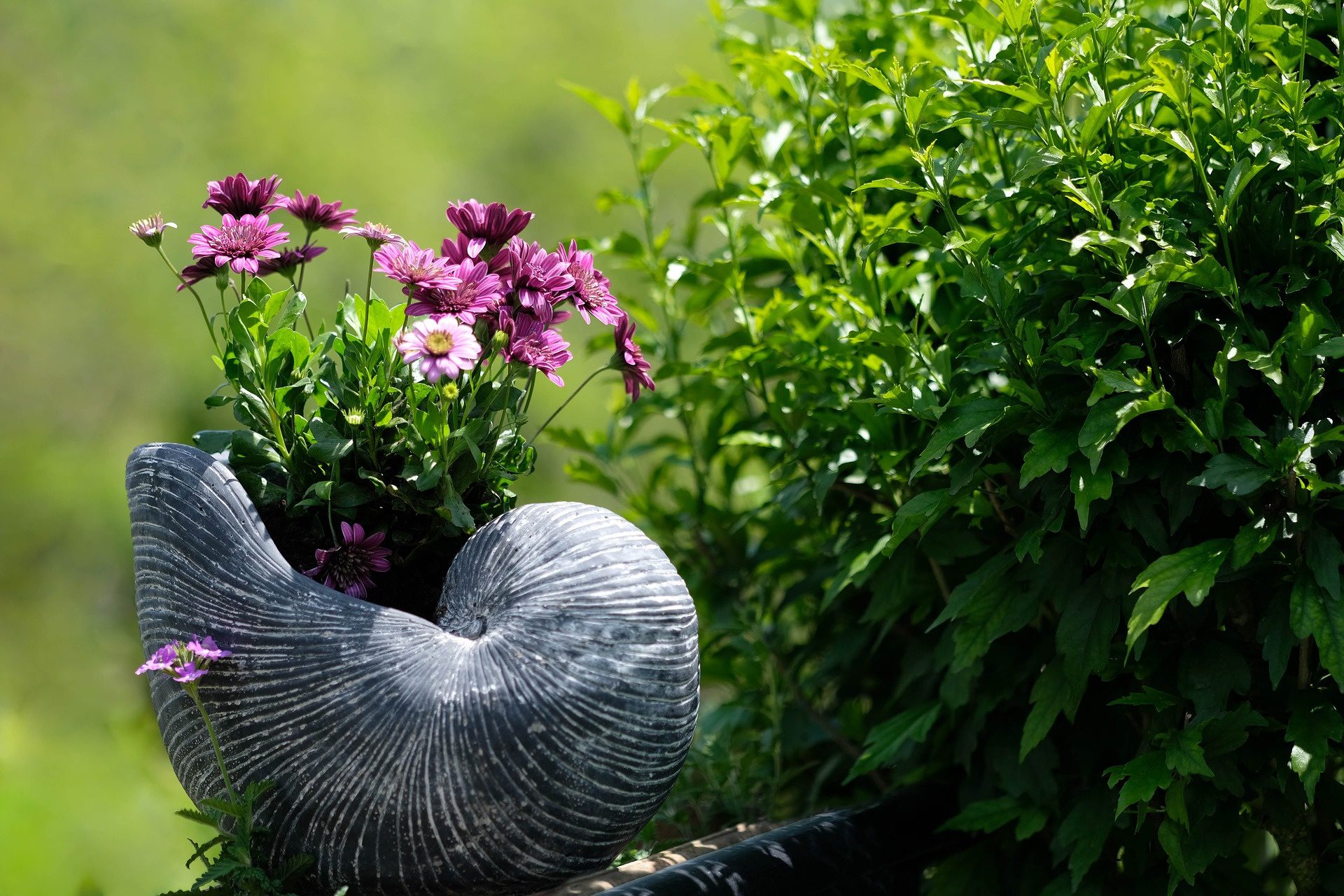If you want to create a better future for your children, you have to teach them how to think for themselves, treat others with respect and provide food and shelter once they reach a certain age. Everybody should learn how to be independent. Growing up and understanding the simple rules of life should be a part of everyone childhood, and your job as a parent is to support your children during this natural process.
Children will learn how to mirror you, and they will adopt some of your habits and behaviours. If you take your time to learn how to create a suitable environment for their growth, your children will become independent individuals with clear minds and strong personalities.
Teaching your children how to cook and prepare food is a great way to help them form healthy eating habits. However, if you want to upgrade their knowledge and skills, it’s advisable to teach them how to grow food from scraps. There are various types of fruits and vegetables that you can replant and grow by yourself. This method can help you save money, reduce waste and create a better relationship with food. Teach your children how to benefit from these activities, and they will always have enough food on the table.
Don’t throw away the leftover leaves
Lettuce is a leafy vegetable that most people want to see on their plate. Its mild flavour mixed with lemon or vinegar can create a sharp contrast that goes well with meat, potatoes and fish. Lettuce is inexpensive, and you can find it in almost every store during the season, or you can harvest it in your garden and eat it fresh. However, this is one of the many types of vegetables that you can re-grow in less than two weeks.
If you’re willing to try this method, prepare one large bowl and leftover lettuce leaves. It’s advisable to do this while they’re still fresh. The brown spots on lettuce are safe for consumption, but they don’t look appetizing. Instead of throwing them in the garbage bin, you can use them to create more food without spending money.
Place the leaves in a bowl and add one-quarter cup of water. If your child is interested in the process, motivate them to help you by placing the bowl near the window so that your new plant can get enough sunlight. Observe your new plant with your child every day, and ask them to tell you more about the changes they can see in front of them. After a few days, ask them to help you transplant the lettuce in soil.
Grow more bean sprouts to boost the immune system
Bean sprouts are not the most favourable option for some families, but they are healthy and full of nutrients. If you’ve never had them before, it’s advisable to increase the diversity of your diet. Bean sprouts are derived from mung beans, and they contain vitamin C, calcium and iron. If your child is curious and wants to learn new things every day, teaching them how to re-grow bean sprouts will keep them entertained for a while.
The process is not complicated, but it sure can be fun! All they’ll have to do is place one or two tablespoons of beans in a glass jar and soak them in water overnight. Remind them to drain the water and return the beans in the container. The following step is to cover them with cloth, rinse the beans the next morning and repeat the process for the next couple of days. After some time, your child will be happy to see their bean sprouts on the table, which will encourage them to eat healthy food.
Spend less money on avocados
If you love guacamole or avocado toast, you probably have a few avocados sitting on the counter after you return from grocery shopping. Unfortunately, this type of fruit is often expensive, but there is a way to enjoy some of your f dishes without spending a lot of money. Children tend to be curious, and if you ask them to participate, they’re most likely to accept the offer. Before you show them the following methods, explain the importance of re-growing food and how they can benefit from it. If you manage to find the right approach, they will become more environmentally conscious and resourceful. The right parenting style can help you create a better future for your child, but it will also affect their emotional and mental state and behaviour.
If your child is going to kindergarten, it’s advisable to skip this option. However, older children can easily learn how to grow avocado from seed.
Help them clean and dry the seed and prepare three toothpicks. Use them to pierce the seed and submerge it in a glass of water. It’s critical not to skip this step because toothpicks allow you to keep one-third of the pit slightly above the water. Your child should wait for it to sprout. Pot your avocado in the soil when the plant is about 15cm tall and water it regularly.
Make sure that there’s always enough garlic in your pantry
Some plants are hard to keep alive, but luckily, garlic is not one of them. This type of vegetable is easy to grow, and you can start the process of growth today if you have a few garlic cloves in your pantry. If you don’t have more than one clove, don’t worry because it will suffice.
You will need fertile soil and a small container. If your child is trying to help, remind them that they can plant the garlic clove in your garden as well. However, it’s advisable not to use potting soil if you want to plant in your garden. When combined with soil outdoors, your seedlings will need more water for growth.
Place your garlic clove in soil with the roots facing down. Provide enough sunlight and water, and you will get more garlic in about 40 days.
The hot chilly sauce will add more spice to your warm winter dishes
Chilly lovers often have to spend lots of money to prepare the homemade hot sauce. Growing hot peppers in the garden are is not difficult or expensive, and you and your young gardeners can quickly re-grow enough for the whole family.
Keep in mind that chilli pepper seeds are hot, and both you and your child should put on protective gloves before touching them.
Put leftover seeds in the soil and water them often. They need lots of sunlight, which is why growing chili peppers in the garden is a better option compared to growing them in a container. They don’t require a lot of care, and you will always be able to save seeds and plant more peppers next year.
Teach your child that they need to wash hands after handling hot peppers. They should also know that they shouldn’t touch their face before they wash their hands. Monitoring plant growth can be interesting to some children, but if your child is not very fond of this activity, there are other ways to teach them how to re-grow food from kitchen scraps.
Eat your veggies fresh
We eat more fresh ingredients during the summer, which is why it would be smart to consider planting more vegetables in your garden. Green onions are one of the easiest plants to grow, but you can also use their roots to produce more goods during their season. You can plant them in the garden or a small container and expect three to four harvests before planting new bulbs.
If your children love green onions, teach them to keep the roots, wash them and put them in a small container. They should provide enough water for the bulbs to grow. After a few days, they will be able to transfer the plant back into the soil.
It’s advisable to equip yourself and your child with garden accessories that will enable you to work in your garden without worrying about safety. A pair of gloves and a digging shovel will serve you well on your journey of creating a healthier relationship with the food you consume.
Keep in mind that you can use the same technique to re-grow leeks. Place the root in a container and ensure that the plant has enough fresh water for growth. Once the root is ready, plant it in fertile soil.
Don’t forget about the importance of fruit
All children and adults should eat fruit daily. If you want to start a new project, you and your child can re-grow some of their favorite fruit in less than a few years. The process will not show immediate results, and you will have to be patient if you want to eat fresh ingredients from your garden. However, growing fruit in your garden can be very beneficial for you during the harvest, and it will allow you to save more money and eat healthier products. You can re-grow peaches, cherries, apples, or even lemons. All you need to do is dry and clean the seeds before putting them in nutrient-rich soil.
If you live in colder areas, you can learn how to grow and care for an indoor lemon tree. Unfortunately, if you want to plant other fruits but don’t have enough space in your garden, the best option for you would be to grow vegetables. Trees can take up a lot of space, but you should try re-growing your favourite fruits if you can find enough room on your property for them.
Conclusion
Providing enough nutritious food for the whole family and teaching your child that plants are good for their health requires a lot of your patience. Don’t let that discourage you because children often mirror our actions, which makes the whole process a lot easier. Talk to your child about your diet and teach them how to take care of their food and make smart choices in the future.
Growing vegetables from kitchen scraps can be a fun way to introduce a healthier lifestyle and create a better relationship with food. If your children are not interested, give them time to adapt. They will eventually learn to love your food and make better choices for themselves. Be patient with your children, and if they’re not into gardening, teach them the basics and let them determine whether they want to learn more.


